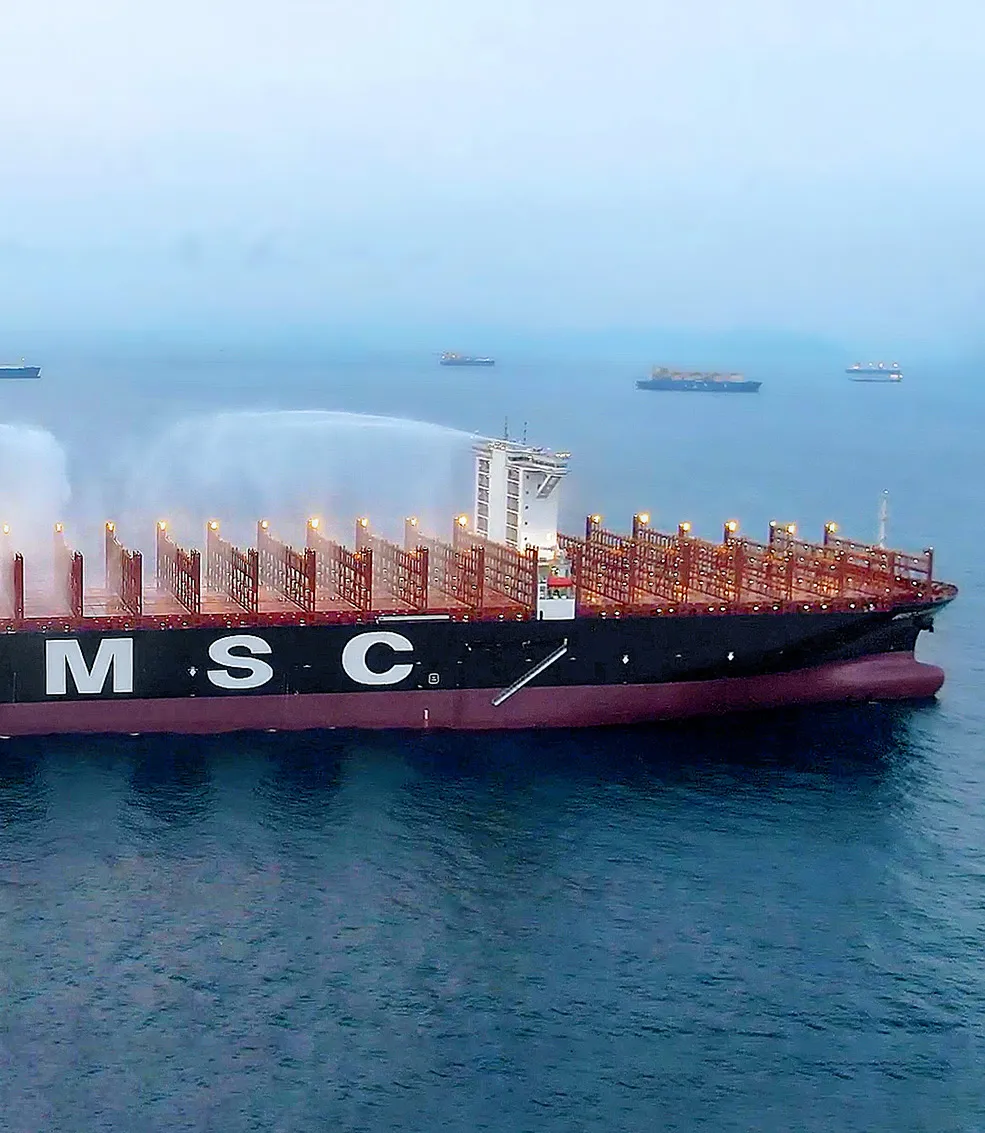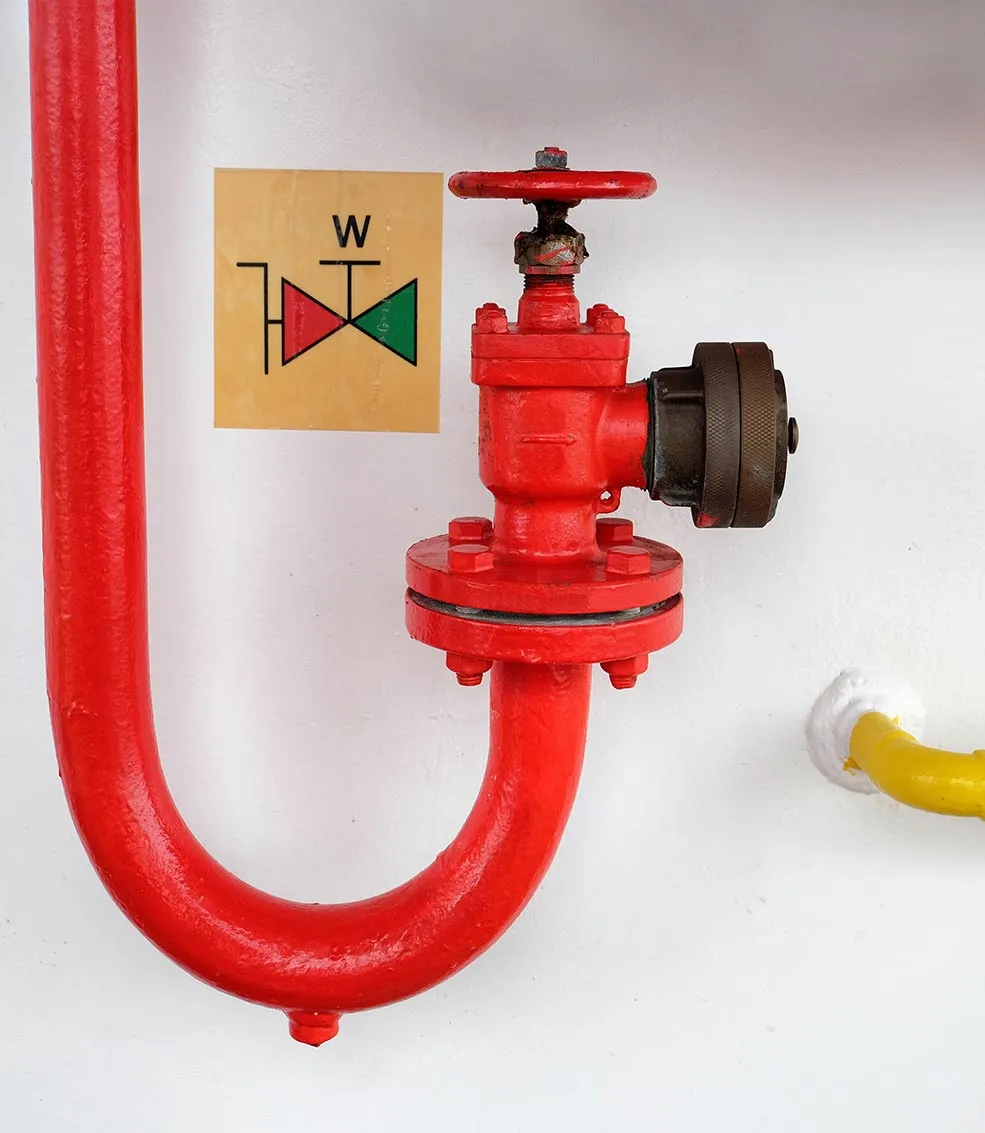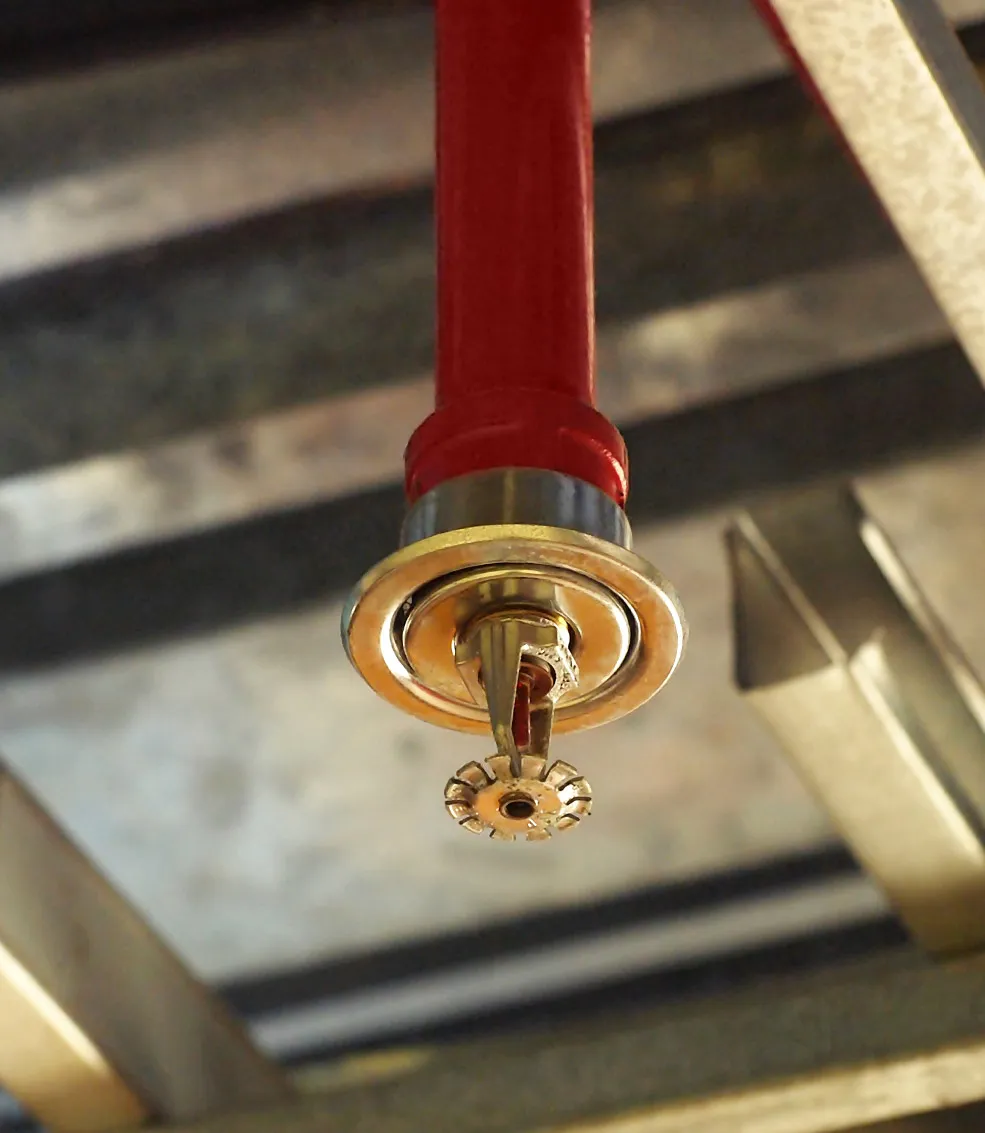A step change in fire safety on board containerships
A new class notation from DNV GL attests to special fire detection and firefighting measures implemented on board a containership. The notation was first given to the 23k class MSC FEBE, the winner of the 2020 Seatrade Shanghai “Ship of the Year” award.

Commitment to safety and the environment
At a time in which the shipping industry is undergoing what may be one of the most dramatic changes in its history, these are attributes that highlight a new paradigm in shipbuilding. The MSC Gülsün class shows where MSC puts its priorities, says Giuseppe Gargiulo, Head of Newbuildings at MSC Mediterranean Shipping Company. “The ‘Ship of the Year’ award underlines our commitment to setting and supporting new trends in containership design. This ship class not only sets a new capacity record but also excels in environmental performance and safety. While crew and cargo safety are our top priorities, maximizing efficiency and minimizing the environmental footprint of our fleet are equally important to us.”

New container ship fire safety notation
MSC FEBE was also among the first vessels to receive a new class notation created by DNV GL specifically for containerships, which attests to fire protection features on board that go beyond the SOLAS requirements. “There has been a perception in the maritime industry that risks of fires in containerships are increasing,” says Holger Jefferies, Head of the Containership Excellence Centre at DNV GL. “While there is on average about one significant incident per year, there may be many smaller cases that go unnoticed by the public. Nevertheless, any of them could potentially cause a larger fire.”
Standard firefighting equipment on board is usually not sufficient to fight a fire spreading across several containers, Jefferies stresses. “This way, a container fire can easily turn into a catastrophic event that is extremely difficult or even impossible to contain or extinguish.” Furthermore, after suffering major fire damage a larger vessel and its cargo may be difficult to recover or find a port of refuge, Jefferies adds. “And the costs caused by damage to people, cargo, the vessel itself and the environment could be immense.”

Advanced firefighting technology
A number of technological advances in recent years have greatly improved the available options for improving fire safety on board, both in terms of fire detection and fire control, says Arne Schulz-Heimbeck, Programme Manager for Containership Development at DNV GL. “Temperature scanning systems can be used to identify containers which are heating up relative to the surrounding ones as early as possible and take appropriate steps to contain the fire inside before it causes major damage. Powerful water jets can be installed in suitable locations from where they can cover the entire deck area and pinpoint any row of containers to cool them down or even extinguish the fire. In addition, there are water-powered, self-drilling firefighting lances that can be used to extinguish a fire inside a container (HydroPenTM), and other advanced fire containment devices.”

A step change in fighting container fires
When ordering a new series of 23k container vessels in 2018, MSC decided to make an extra investment in improved fire safety on board their new vessels. “It was important that everything we fitted will serve a clear purpose towards increased fire safety,” says MSC’s Giuseppe Gargiulo. “We considered the investment cost as a second priority in this case.”
Quite a bit of inspiration regarding the methods and options came from the offshore industry, Gargiulo adds. “We used whatever on-board experience we could draw on. We definitely wanted to take a bold step forward instead of expanding incrementally on existing approaches.”
DNV GL joined MSC in this project to provide advisory services. The two companies carried out dedicated hazard identification workshops to make sure that whichever means of fire detection and firefighting they chose for the new vessels would be both adequate and efficient.

Firefighting systems should be ship-specific
The hazard identification workshops primarily focused on keeping the crew out of harm’s way by enabling firefighting operations that wouldn’t require the presence of crew directly at the fire site. It became clear during the workshops that early fire detection should be given a high priority to avoid loss of control. A number of fire detection and firefighting systems were discussed, and the systems most suitable for the ship layout were chosen for MSC FEBE and her sister vessels.
The equipment includes a thermal camera system covering the entire deck area to detect containers heating up, and a water jet system capable of covering the full length and width of the deck to cool or even extinguish fires developing in deck containers. These choices had consequences for the overall design and layout of the vessels. For example, the capacity of sea chests, pumps and other equipment had to be adequate for the water lifting height and power required to spray the water far enough.

FCS notation leaves flexible options
Upon delivery, the MSC vessels were awarded DNV GL’s new class notation FCS(C, HA, FD, FF, HF). The qualifiers indicate that the ships provide additional fire protection for the container cargo area (C), have undergone a hazard identification assessment (HA), and meet enhanced requirements for fire detection (FD) and firefighting systems (FF), as well as those for firefighting by container hold flooding (HF) with involvement of DNV GL’s Emergency Response Service, ERSTM.
The FCS notation defines a function-based set of options for dealing with container fire incidents on board but leaves the choice of specific equipment to the experts developing a solution for a given ship. The modular concept of the class notation provides enough flexibility to select one or several measures for detecting and/or fighting fires in holds and on deck. This holistic approach has been deemed most appropriate considering the wide variety of ship designs, and can be applied to both newbuilds and ships in service.
Contact us

Arne Schulz-Heimbeck
Senior Principal Engineer and Programme Development Manager for Containerships
- MSC (presumably)
- Rawi Rochanavipart – Shutterstock.com
- edwardolive – Shutterstock.com
- coolbkk – Shutterstock.com
- DNV GL
View image copyright information
